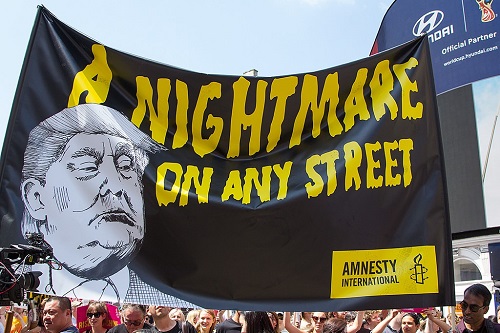Chris Beckett photo
By
Tom Arms
One of the world’s best museums of modern art is the Tate Modern in the monolithic old Bankside power station on the south bank of London’s River Thames.
Personally I prefer hanging my walls with figurative paintings of recognisable people, places and flowers, but I enjoy going to the Tate Modern for a fresh perspective, good laugh and the occasional thought-provoking head scratch.
One exhibit that achieved all three of those reactions was “An Oak Tree.” I am afraid I can’t remember the artist’s name but the structure of the exhibit remains crystal clear in my memory.
Halfway up the wall, just out of reach of all but the tallest member of the visiting public, was a half-filled glass of water on a small wooden shelf bracketed to the wall. Underneath the shelf was a short interview between the artist and, presumably, an arts journalist. It went something like this:
Journalist: “This is a most interesting exhibit. What do you call it.”
Artist: “I call it The Oak Tree.”
Journalist: “But it looks like a half-filled glass of water on a wooden shelf to me.”
Artist: “Well, you are wrong. It is an oak tree.”
Journalist: “But everyone who sees it says it is not an oak tree, but a half-filled glass of water on a wooden shelf.”
Artist: “They are wrong and I am right.”
Journalist: “But what gives you the right to say that they are wrong and you are right when all the senses tell us that what we are looking at is a half-filled glass of water on a wooden shelf.”
Artist: “Because I am the artist.”
The water, the glass, the shelf and the printed interview was a perfect example of static performance art. I laughed out loud and spent the next 20 minutes dragging strangers over to point out the exhibit. “What do you think?” I asked them.
The vast majority of the strait-laced Englishmen uttered a dismissive snort: “Ridiculous.”
But not everyone. Some laughed along with me. Some described it as genius. Some said: “He did create it. If he created it he should be able to call if what he wants.”
“The Oak Tree” could be described as “nonsense art.” There is also a writing genre known as “nonsense literature.” One of the best known examples of nonsense literature is Lewis Carroll’s 1865 upside down children’s adventure story “Alice in Wonderland.” Young Alice wished for a world where “everything would be nonsense. Nothing would be what it is, because everything would be what it isn’t. And contrary wise, what is, it wouldn’t be. And what it wouldn’t be, it would. You see?”
Alice’s wish was granted. She chased a waistcoated white rabbit into an almost bottomless rabbit hole where she encountered a looking glass world where right was left, left was right, and, as the Cheshire cat explained: “Imagination is the only weapon in the war against reality.”
More frightening than nonsensical is George Orwell’s 1984 whose central character Winston Smith is told: “The party told you to reject the evidence of your eyes and ears. It was their final and essential command.”
All the above examples are taken from art and literature. A world of nonsense and fiction. They have no purpose in the everyday life of fact except to entertain and provoke thought. Life-changing decisions in the real world are based on facts which in turn are established on the well-respected natural senses of sight, sound, touch, taste and hearing. This approach is essential because it provides a firm foundation from which to venture forth.
That foundation has been shaken to the core by the double onslaught of alternative facts and the post-truth world. Experts and their facts have been dismissed as irrelevant, along with the news media, medical experts, climatologists, statisticians, election results and many more. As Donald Trump, the president of the United States and leader of the Free World, told a Kansas City rally this week: “Just remember, what you are seeing and what you are reading is not what is happening.”
Tom Arms
I am a journalist, entrepreneur and historian with extensive experience in print, web and broadcast journalism. I started as a diplomatic correspondent, wrote several books (The Falklands Crisis, World Elections On File and the Encyclopedia of the Cold War), and then in 1987 started my own business (Future Events News Service, www.fensinformation.com) which over 25 years established itself as the world and UK media’s diary. Our strapline was: “We set the world’s news agenda.” I sold FENS in December 2012 but retained the exclusive broadcast rights to all of FENS data. To exploit these rights I set up LookAhead TV which produces unique programmes which “Broadcasts Tomorrow Today” so that viewers can “Plan to Participate.” LookAhead has appeared regularly on Vox Africa, Radio Tatras International, The Conversation and Voice of Africa Radio.
In addition to being a syndicated broadcaster and columnist on global affairs, Tom is also available for speaking engagements and can be contacted on Twitter, Linkedin and email: [email protected].



No Comments Yet!
You can be first to comment this post!